
pip is Python's package management tool, used to install, upgrade and manage Python packages. As Python continues to evolve, pip is constantly being updated and improved. This article will introduce the basic use of pip and provide some specific code examples to help readers quickly get started and master the advanced functions of pip.
Part 1: Installation and basic use of pip
- Download and install pip
During the installation of Python, pip will be installed by default. If pip has not been installed, you can download the corresponding version of the installation package from the Python official website and install it. - Check pip version
Use the following command to check the version of pip: pip --version - Update pip
Use the following command to update pip to the latest version: pip install --upgrade pip - Install Python package
Use the following command to install the Python package: pip install package name - Uninstall the Python package
Use the following command to uninstall the installed Python package: pip uninstall package name
Part 2: Advanced use of pip
-
Export and import dependencies
When we develop a Python project, we may use multiple Three-party library. pip provides a function to export project dependencies to files, making it easy to restore the same dependencies in other environments. The sample code is as follows:Export dependencies: pip freeze > requirements.txt
Import dependencies: pip install -r requirements.txt - Find Python packages
Use the following Command to find Python packages in the pip repository: pip search package name - Display installed Python packages
Use the following command to display installed Python packages: pip list -
package Version management
pip allows us to install specified versions of Python packages. The sample code is as follows:Install the specified version of the package: pip install package name==version number
Install the latest version of the package: pip install --upgrade package name - Settings Proxy
If you need to use a proxy server when using pip, you can use the following command to set the proxy: pip install --proxy=proxy address package name -
Batch installation of Python packages
You can use requirements .txt files to batch install Python packages. The sample code is as follows:Install all packages in batches: pip install -r requirements.txt
Install specified packages in batches: pip install -r requirements.txt --only package name
This article only briefly introduces the use of pip. Pip has many other functions and parameters. Readers can learn more by consulting the official documentation of pip. By learning and mastering the use of pip, we can manage Python packages more conveniently and improve development efficiency.
To summarize, through the introduction of this article, readers can understand the installation, upgrade and basic usage of pip, and specific code examples can help readers better master the advanced functions of pip. I hope readers can become proficient in using pip for package management and improve Python development efficiency through learning and practice.
The above is the detailed content of Improve your pip skills step by step: from basic to expert. For more information, please follow other related articles on the PHP Chinese website!
 win10/11BingService2.0升级是啥win10/11BingService2.0升级內容详细介绍Jul 13, 2023 am 09:41 AM
win10/11BingService2.0升级是啥win10/11BingService2.0升级內容详细介绍Jul 13, 2023 am 09:41 AMwin10/11BingService2.0升级是什么叫最近许多用户满意度的问题,客户们在应用win10和win11的过程中发觉最近升级了个新的服务项目,名叫BingService2.0,这一名字大伙儿第一眼会非常生疏,事实上这一业务是微软的bing搜索的服务项目结合,那麼下边便是实际的win10/11BingService2.0升级內容详细介绍。win10/11BingService2.0升级是啥一些Win11/Win10客户汇报了一个新的神密升级,被分类为品质升级,名字为“Microsoft
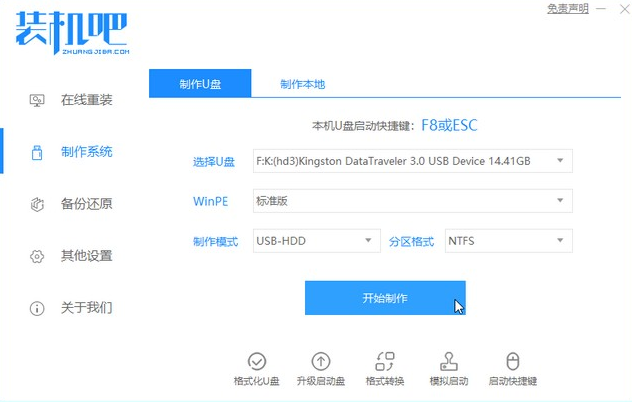 win7系统升级成win10系统怎么升级Jul 11, 2023 am 11:49 AM
win7系统升级成win10系统怎么升级Jul 11, 2023 am 11:49 AMwin10系统已经越来越成熟了,很多win7用户都想把系统升级成win10,但是又不知道如何升级,下面就教大家电脑升级成win10的方法吧。1、浏览器搜索装机吧在线系统重装工具软件并打开,选择制作系统,点击开始制作。2、选择win10系统镜像,然后点击开始制作。3、进入下载文件阶段,请耐心等候。4、等待下载部署完成后,拔除启动盘退出。5、把制作好的启动U盘插到电脑上,开机快速按Esc或Del或F12等进入到Bios设置U盘启动。这里是按F12进入的快速引导菜单,选择U盘进入。6、进入PE系统,选
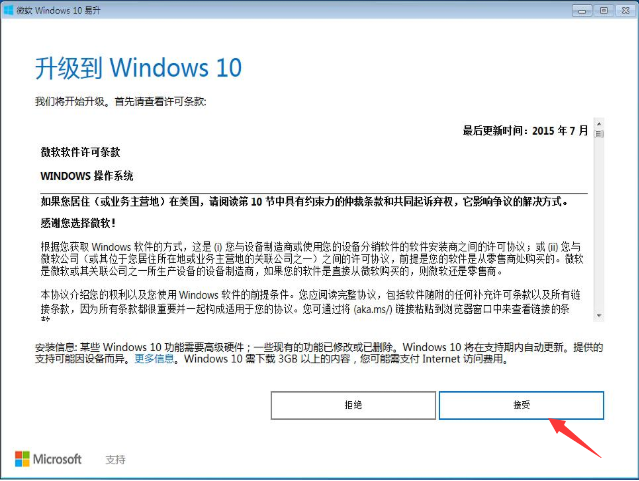 教你如何将windows7升级到win10Jul 12, 2023 pm 04:13 PM
教你如何将windows7升级到win10Jul 12, 2023 pm 04:13 PM随着windows10系统的发布,大部分用户都去升级了系统,不过也有小部分windows7系统的用户觉得win10还不够稳定,依旧观望不升级,最近就有个windows7的用户想要升级到win10系统,那么我们该如何升级呢?接下来小编就把win7升级win10教程分享给大家,快来学习下吧。 windows7升级到win10方法如下: 1.首选我们打开微软官网,升级win10创意者更新的工具易升,点击接受微软软件许可条款。 2.升级工具检测电脑环境是否正常,检测完成后会开始下载win10系
 教大家正版win7怎么升级win10系统Jul 09, 2023 pm 03:33 PM
教大家正版win7怎么升级win10系统Jul 09, 2023 pm 03:33 PM随着windows10操作系统的不断成熟,越来越多的win7系统用户开始使用win10操作系统,那么win7怎么升级到win10呢?1、首先我们在电脑上下载小白一键重装系统,打开选择win10系统安装,重装之前请自行备份好c盘和桌面的数据。2、选择之后会为我们自动下载安装系统所需要的文件,耐心等待注意电脑不要断电断网。3、文件下完之后会提示我们重启电脑,点击立即重启。4、接着来到这个界面,我们选择第二个选项进入pe系统。5、进入pe系统后软件会开始安装win10系统,耐心等待即可。6、接着引导修
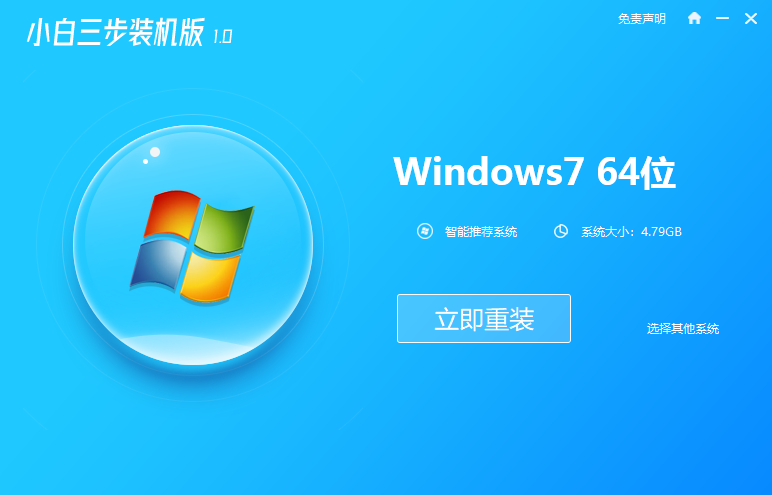 老电脑系统xp升级win7教程步骤Jul 07, 2023 pm 10:21 PM
老电脑系统xp升级win7教程步骤Jul 07, 2023 pm 10:21 PMxp系统曾经是使用最多的系统,不过随着硬件的不断升级,xp系统已经不能发挥硬件的性能,所以很多朋友就想升级win7系统,下面就和大家分享一下老电脑升级win7系统的方法吧。1、在小白一键重装系统官网中下载小白三步装机版软件并打开,软件会自动帮助我们匹配合适的系统,然后点击立即重装。2、接下来软件就会帮助我们直接下载系统镜像,只需要耐心等候即可。3、下载完成后软件会帮助我们直接进行在线重装Windows系统,请根据提示操作。4、安装完成后会提示我们重启,选择立即重启。5、重启后在PE菜单中选择Xi
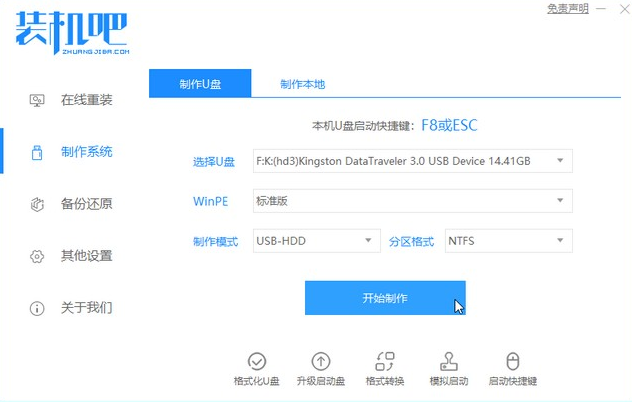 win7如何升级到win10系统Jul 11, 2023 pm 05:29 PM
win7如何升级到win10系统Jul 11, 2023 pm 05:29 PM随着Win10系统的逐步成熟,很多用户已经用上了Win10系统,而一些还在用Windows7的朋友是不是也心动了呢,那么Windows7怎么升级10系统呢?下面一起来看看吧。1、浏览器搜索装机吧在线系统重装工具软件并打开,选择制作系统,点击开始制作。2、选择win10系统镜像,然后点击开始制作。3、进入下载文件阶段,请耐心等候。4、等待下载部署完成后,拔除启动盘退出。5、把制作好的启动U盘插到电脑上,开机快速按Esc或Del或F12等进入到Bios设置U盘启动。这里是按F12进入的快速引导菜单,
 win11改win10系统教程的详细介绍Jul 08, 2023 pm 09:21 PM
win11改win10系统教程的详细介绍Jul 08, 2023 pm 09:21 PM微软6月24号正式公布了win11系统,可以看到用户界面、开始菜单等和Windows10X中发现的非常相似。有的朋友在使用预览版的时候发现用的不习惯,想要改win10系统开使用,那么我们要如何操作呢,下面我们就来看看win11改win10系统教程,一起来学习一下吧。1、第一步是从Windows11打开新设置。在这里,您需要转到图像中显示的系统设置。2、在系统设置下,选择“恢复”选项。在这里,您将能够看到“以前版本的窗口”选项。您还可以在它旁边看到一个“返回”按钮,单击此按钮。3、您可以指定要返回
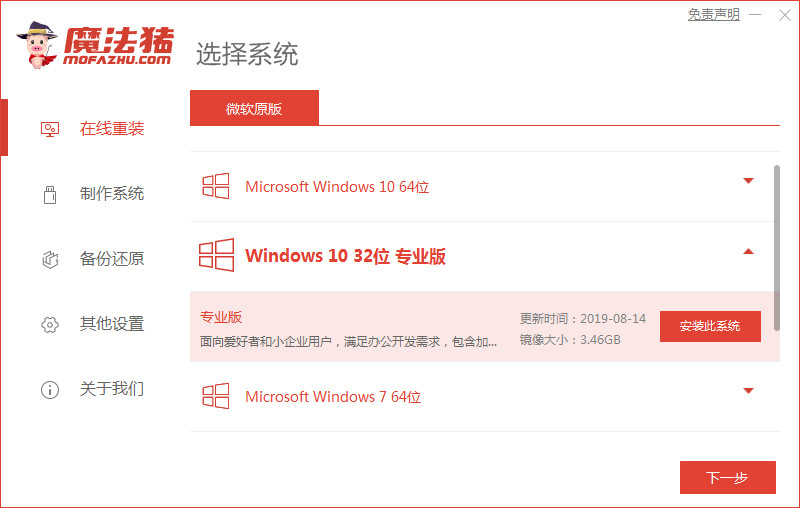 win7升级win10系统具体过程Jul 11, 2023 am 09:37 AM
win7升级win10系统具体过程Jul 11, 2023 am 09:37 AM随着windows10操作系统的不断成熟,越来越多的win7系统用户开始使用win10操作系统,本文也给大家带来一篇win10系统安装过程,一起来看看吧。1、首先我们可以在电脑上下载这个工具,然后选择在线重装,点击安装win10系统,重装之前请自行备份c盘和桌面的数据。2、接着软件就会帮我们下载系统镜像资源,等待它下好即可,注意重装过程不要关闭电脑。3、等待环境部署完成后我们点击立即重启,电脑就会开始重新启动了。4、接着我们来到windows启动管理器,我们选择第二项进入pe系统。5、在pe系统


Hot AI Tools

Undresser.AI Undress
AI-powered app for creating realistic nude photos

AI Clothes Remover
Online AI tool for removing clothes from photos.

Undress AI Tool
Undress images for free

Clothoff.io
AI clothes remover

AI Hentai Generator
Generate AI Hentai for free.

Hot Article

Hot Tools

Zend Studio 13.0.1
Powerful PHP integrated development environment

SublimeText3 English version
Recommended: Win version, supports code prompts!

Dreamweaver Mac version
Visual web development tools

ZendStudio 13.5.1 Mac
Powerful PHP integrated development environment

Dreamweaver CS6
Visual web development tools





